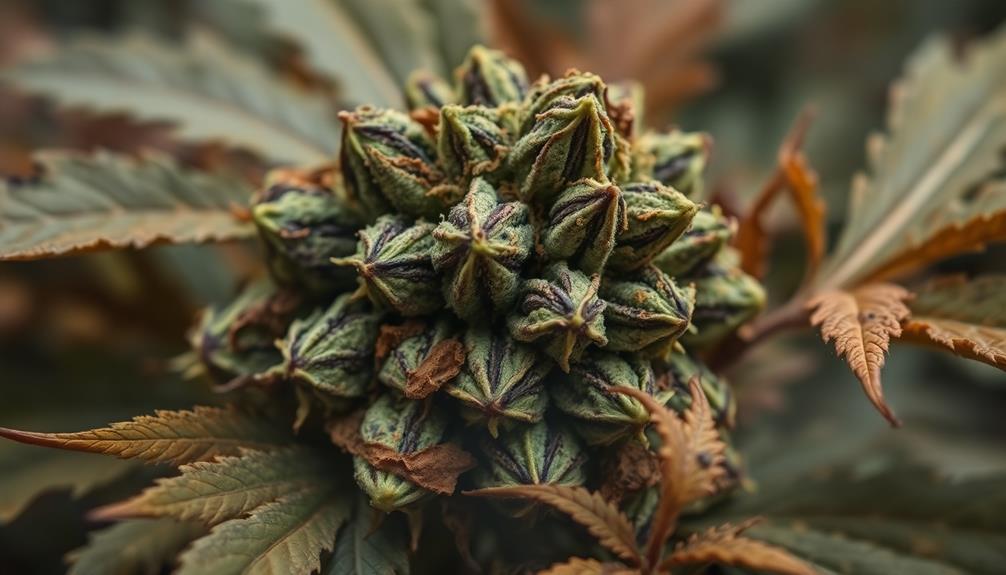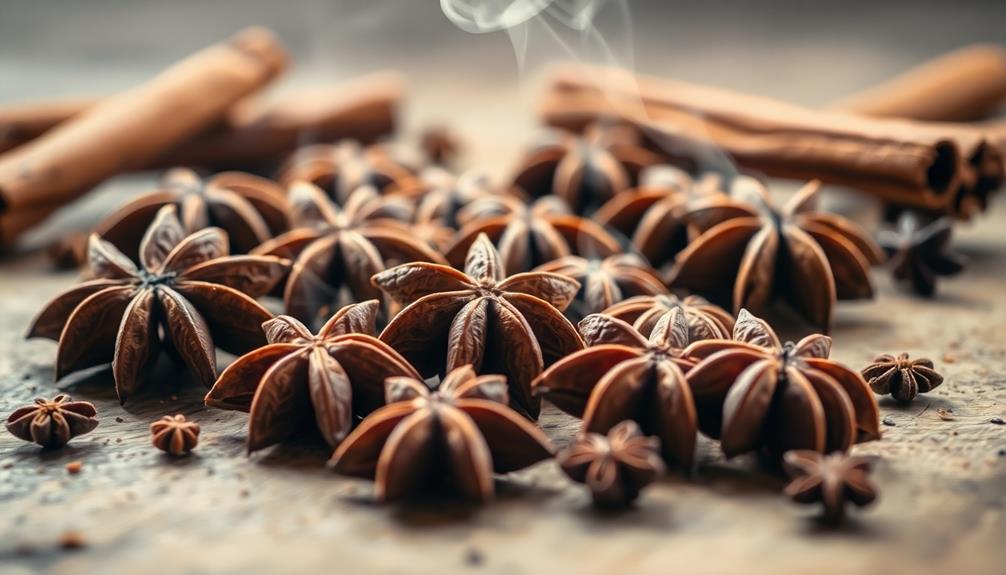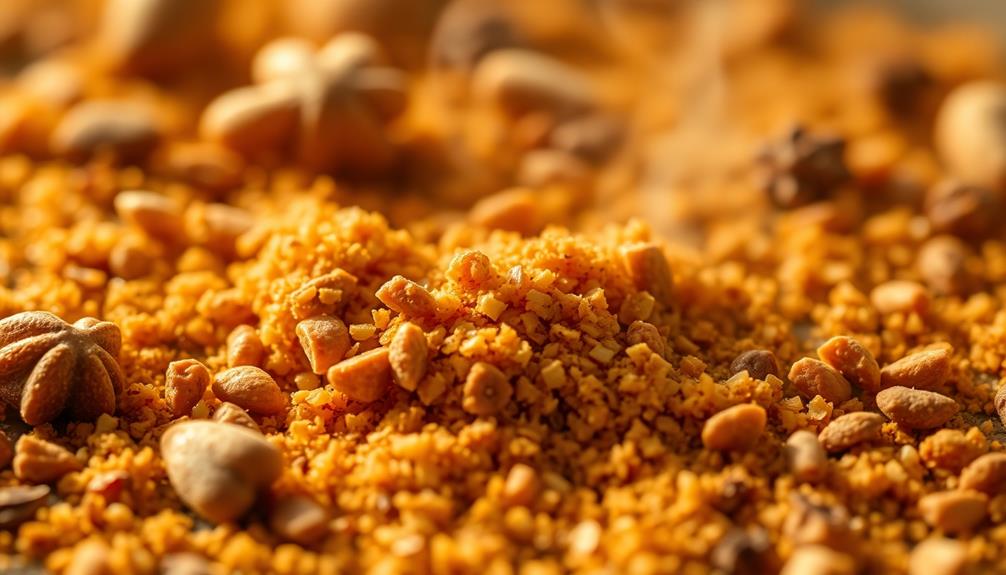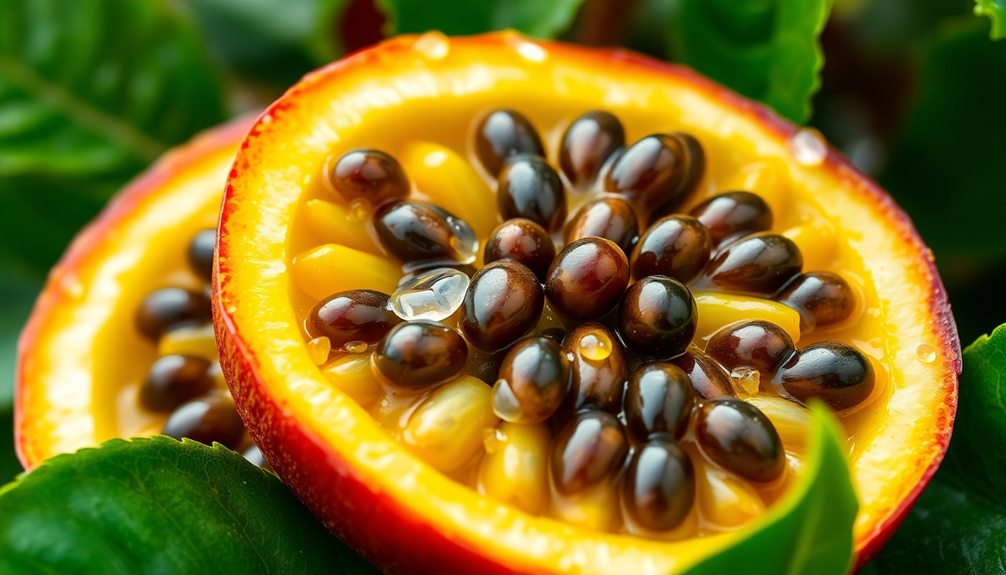Bud rot smells musty, like damp, moldy clothes or rotting fruit. You might also notice notes of stale popcorn or wet hay as the rot spreads. This unpleasant aroma indicates high humidity and poor airflow in your plants' environment. If you catch the smell early, you can prevent serious damage to your crop. Remember, the stronger the scent, the more advanced the bud rot might be. This issue not only impacts your plants but can also pose health risks due to mold spores. Staying alert to these smells helps protect your garden and ensures healthy growth—stick around for more insights on prevention!
Key Takeaways
- Bud rot smells musty and damp, similar to moldy clothes or rotting fruit.
- As infection progresses, the aroma can evolve to include stale popcorn and wet hay.
- The smell intensifies in conditions of high humidity and poor airflow.
- Spoiled sweet scents may develop in the later stages of bud rot.
- Recognizing this unpleasant odor is crucial for early detection and crop health.
Introduction

Experiencing bud rot can be a nightmare for any grower, especially when you start noticing changes in your plants. One of the first signs you might detect is the Bud Rot smell, a distinct musty odor that often reminds you of damp, moldy clothes or rotting fruit.
This smell can also resemble stale popcorn mixed with peanut shells, causing concern for your cannabis plants. As bud rot progresses, the unpleasant aroma becomes stronger, making it easier to spot, even before you see any visible signs of infection. In addition to the foul smell, you may notice your buds losing their structural integrity as they become mushy or crumble when touched. This can happen quickly, underscoring the importance of regular inspection. Interestingly, some growers often wonder **why weed smells like skunk**, which is due to the presence of specific terpenes like myrcene and caryophyllene, but when bud rot sets in, the distinctive skunky scent is overpowered by the moldy, rotten odor.
It's crucial to keep an eye out for these mold-related odors, as they often indicate issues with humidity and air circulation in your growing area. Poor air circulation can promote mold growth, so it's essential to create a well-ventilated environment. To prevent mold development, consider installing fans or utilizing dehumidifiers to reduce excessive moisture in the air. Additionally, learning to identify what black mold smells like—often described as musty, damp, or earthy—can help you detect problems early and take immediate action. Monitoring these conditions will help maintain a healthier and more productive growing environment.
To prevent mold, regularly check the humidity levels and ensure your plants get enough airflow. This proactive approach can save your crop from the devastating effects of bud rot.
Description of the Smell
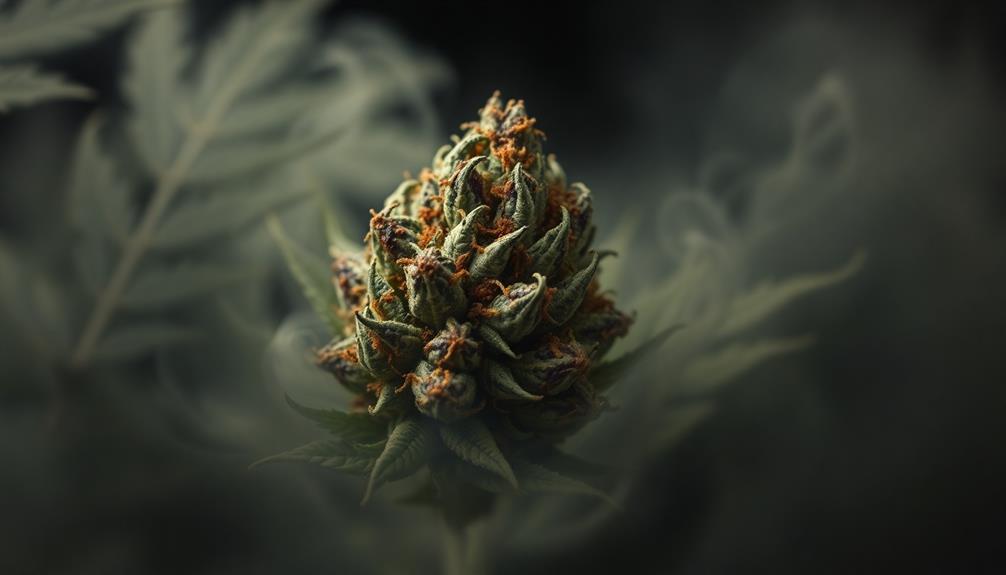
The smell of bud rot is unmistakable and usually hits you before any visible signs of infection appear. It often carries a musty and damp odor, much like moldy clothes or rotting fruit.
As the infection spreads, you might notice the aroma intensifying, blending stale popcorn and wet hay. This unique smell can signal that humidity levels and moisture are too high, creating a perfect environment for mold.
If you catch a whiff of that damp, moldy smell, it's time for an immediate inspection of your plants. Even if you don't see any infected buds yet, that unpleasant scent is a clear warning that something's wrong.
Some growers even describe a spoiled sweet scent that becomes more apparent in the later stages of bud rot.
Recognizing these smells can help you take action quickly to prevent the spread of mold. Remember, the sooner you detect bud rot, the better chance you have of saving your crop.
Source and Composition
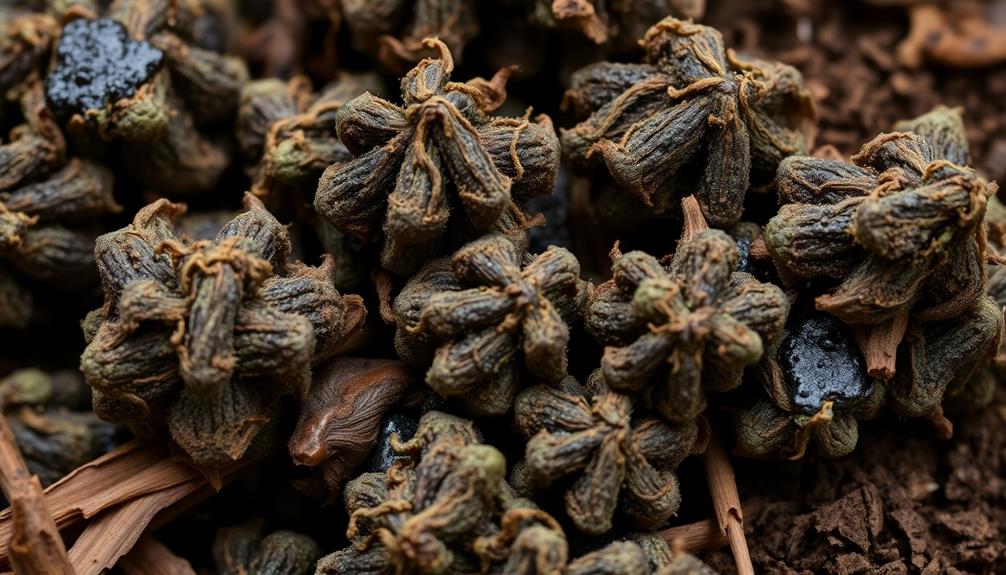
Bud rot's distinct smell originates from the Botrytis cinerea fungus, which produces mycelium and spores in high-humidity conditions.
You might notice a musty odor that reminds you of damp, moldy clothes or rotting fruit. This smell can also resemble wet hay, creating an unpleasant atmosphere in your growing area.
As the infection progresses, the scent becomes stronger and develops a stale, damp quality.
It's essential to recognize that the composition of this odor stems from the mycelium and spores produced by the fungus. The more humid and warm your environment is, the more intense the smell can become.
In the early stages of bud rot, the musty odor may be subtle, making it hard to detect.
That's why you should keep an eye on your plants regularly. If you notice this smell getting stronger, it's a sign that the infection is worsening.
Act quickly to prevent further damage. By understanding the source and composition of bud rot's smell, you can better protect your plants from this pesky fungus and maintain a healthy growing environment.
Typical Scenarios or Environments

High humidity and poor airflow create the perfect storm for bud rot to thrive, making certain environments more susceptible to this fungal infection.
You'll often find bud rot spreads in areas where these environmental factors are at play. For instance, if you're growing plants outdoors, sudden weather changes, like unexpected rain, can raise humidity levels, increasing the risk of bud rot and its musty odor.
To detect bud rot early, regular monitoring of your plants is essential. Pay attention to any signs of bud rot, such as the distinct smell that resembles damp, moldy clothes or rotting fruit. This odor can become stronger as the infection progresses.
In indoor settings, ensure your space has proper airflow. Without it, the chances of developing bud rot increase.
Healthy plants can emit various scents during their growth stages, which may confuse you when trying to identify bud rot. However, with keen observation and understanding of these typical scenarios, you can act quickly.
Emotional or Cultural Associations

Among growers and cannabis enthusiasts, the musty scent of bud rot often stirs up feelings of disappointment and concern. When you catch a whiff of that moldy aroma, it's not just about the smell; it can also signal potential crop loss.
This unpleasant odor can evoke emotional responses tied to past experiences with spoiled food, making you wary of affected products.
In the cannabis community, the smell is a significant cultural issue. Many people believe that a strong, moldy scent reflects poor quality and negligence in cultivation practices. This perception can influence your choices when it comes to consumption.
After all, the idea of health and safety is crucial. If bud rot is present, you might hesitate to purchase or use that product, worried about its quality and potential risks.
Ultimately, the musty smell of bud rot serves as a reminder of the importance of quality in cannabis. It's not just about enjoying the experience; it's also about ensuring safety and making informed decisions.
Health or Safety Considerations
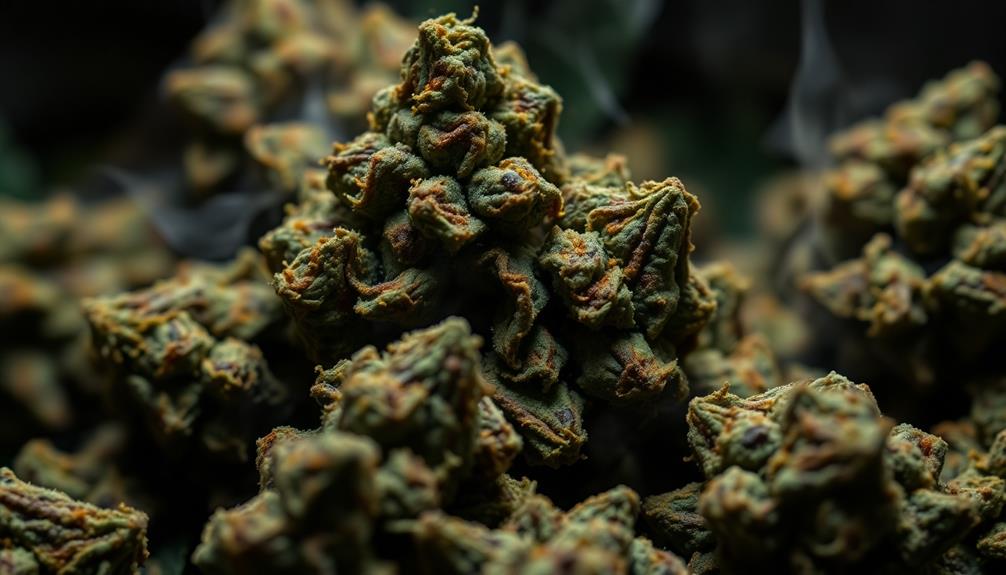
The presence of bud rot poses serious health and safety risks that you shouldn't ignore. Smoking moldy weed can lead to allergic reactions and respiratory issues, especially if you're already dealing with lung conditions.
The musty odor that often comes with bud rot is a warning sign of harmful mold spores lurking in your cannabis. These mold spores can cause health risks, particularly for those with a weakened immune system.
To keep yourself safe, it's essential to inspect your plants regularly. Look for any unusual smells or signs of mold. If you find bud rot, it's best to remove excess affected areas immediately.
However, cutting off the moldy parts isn't enough; you should dispose of the entire plant to avoid consuming contaminated material.
Taking these preventative measures can help you steer clear of serious health complications, like chronic pulmonary aspergillosis.
Final Thoughts
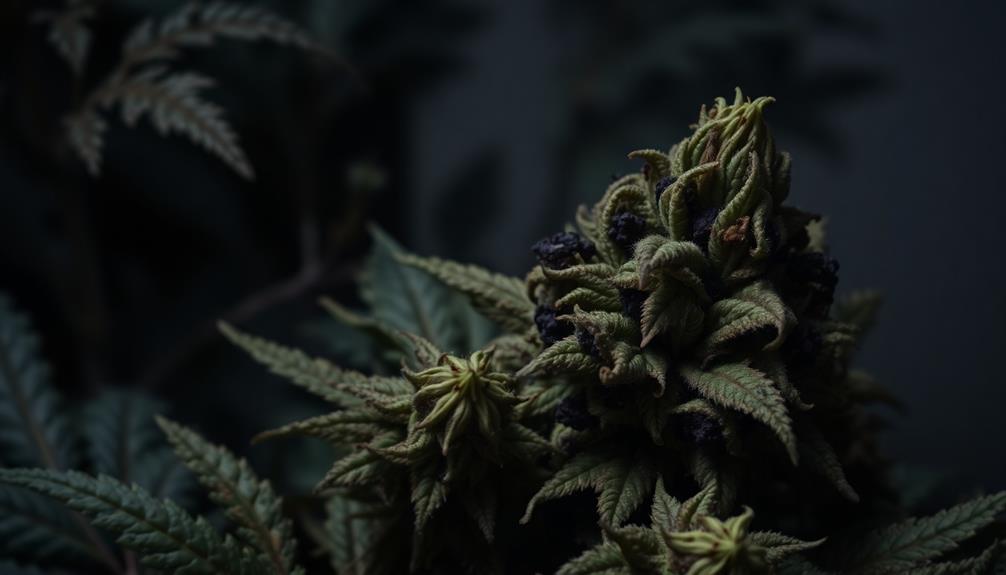
Recognizing bud rot's distinct musty odor is crucial for maintaining the health of your cannabis plants. This unpleasant aroma resembles damp, moldy clothes or rotting fruit.
As the condition worsens, the smell becomes stronger and may even include hints of stale popcorn or wet hay, signaling decaying cannabis buds.
Early detection of bud rot can be tricky since the scent can change subtly, often blending in with normal plant odors. That's why it's essential to monitor your plants regularly. If you catch the smell early, you stand a better chance of preventing a full-blown fungal infection.
Keep an eye out for any visual signs of bud rot, like brown or gray spots on the buds. If you notice these changes, act quickly!
Remove the infected buds to protect the rest of your plants. Remember, the sooner you detect this issue, the better your chances of saving your crop.
Frequently Asked Questions
How Do I Know if I Have Bud Rot?
To know if you've got bud rot, regularly inspect your plants for unusual signs. Look for discoloration, wilting, or musty odors. If you notice these, act quickly to prevent further damage to your crop.
Can You Save Buds With Bud Rot?
You can try saving buds with bud rot by removing infected areas, but it's risky. If you act quickly, improve airflow, and reduce humidity, healthy buds might recover within a week. Monitor closely for success.
What Does Botrytis Smell Like?
When you encounter Botrytis, you'll notice a musty odor that resembles damp, moldy clothes or rotting fruit. This distinct smell warns you of potential contamination, so don't ignore it in your monitoring efforts.
What Does Mouldy Bud Smell Like?
When you encounter mouldy bud, you'll notice a musty odor, reminiscent of damp clothes or rotting fruit. As it progresses, the smell intensifies, resembling stale popcorn mixed with peanut shells, indicating serious decay.
